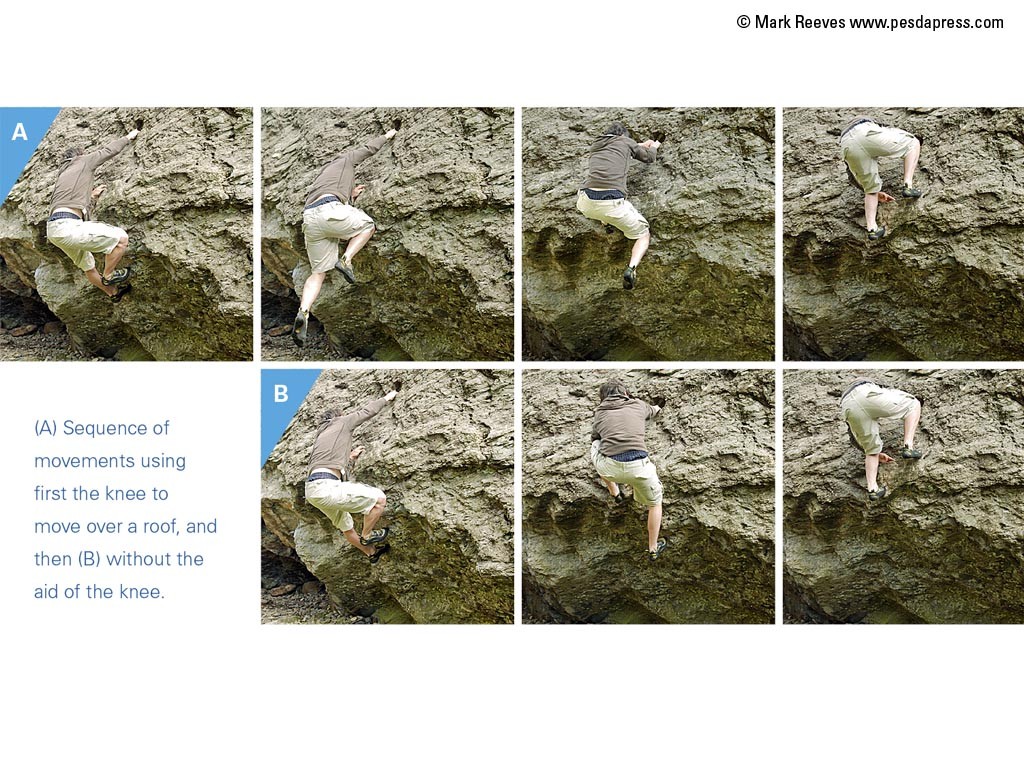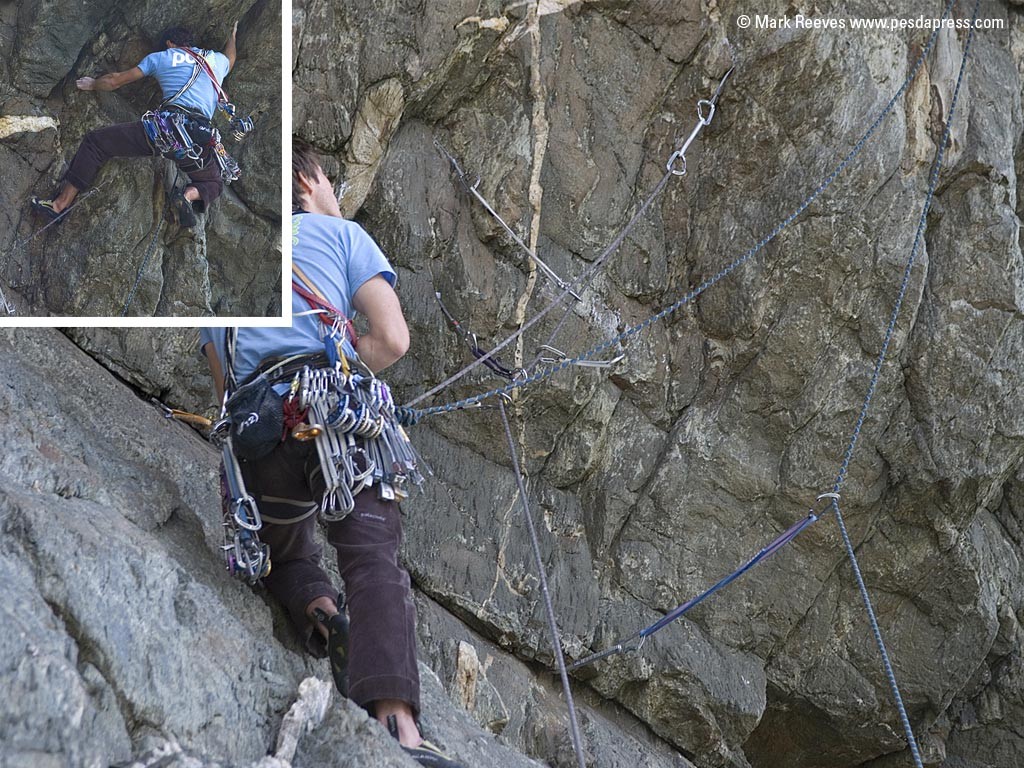Moving around roofs can be strenuous on the arms, the trick is to move past the obstacle as quickly as possible, to a rest above.
Place gear as close up under the roof as possible, and even above the lip of the roof if you can reach. Going up and down a few times may give you a clear picture of where hand and footholds lie. Having placed gear or taken a peek over the lip descend to a rest below the roof to prepare yourself. When you decide to go, do so with determination and don’t stop until you’re above the roof where it will be far less strenuous to stop and place gear.

Roof exercises
Below the roof nd a good and look at the moves above. When you have an idea of how to proceed, move up until you are faced with the need to step your feet over the roof.
With strength you will be able to step your foot over the lip of the roof, but to start with and on harder routes you will nd it easier to place your knee over the roof to rock-over and step up with your other foot. Don’t stop until you are stood above the roof.
Roof tips
- Try and remember that standing sideways on before and after the roof to save energy and helps us develop the least strenuous position or even a hands off rest.
- Move as swiftly as possible through the roof.
- Rest after you have stepped over the roof.
Overhanging Walls
By there very nature an overhanging wall is going to be strenuous. At lower grades the chances are that any steep rock will be reasonably short lived and you will be able to rest at either the top or bottom of the section.
Just like a roof find a good rest below a steep section and place gear as high as possible. Whilst stood below try and work out the sequence of moves for your hands and feet. You may be able to mark footholds with a dab of chalk to help you spot them when you are committed to the hard climbing.
After assessing the moves you face a decision. If the section is short, commit to climbing quickly and confidently through it. If on the other hand you are unsure then you can climb up a few moves and place some higher gear before reversing back to the rest. By repeatedly going up and down you can place progressively higher runners and also start to work out the complete sequence to overcome the obstacle.

If you choose to yo-yo up and down like this, keep in mind whether the moves you are making are reversible and just how long can you hang on in that position before you fail? You’ll need to balance working out the sequence versus the need to blast on through the crux before you become too pumped.
At times climbers choose to construct a ‘bomb shelter’ or a cluster of runners just before the crux or steep section in order to build confidence.
Overhang Tips
- Arms straight and driving from the feet, minimise the strain on your arms.
- From a good rest below a steep section, work out your probable sequence of moves and where possible, mark any useful footholds as far as you can reach with chalk. Then give it a go. If you find extra holds that would make the sequence easier, reverse back down to the rest and try again. Repeat this until you are ready to move through the whole section. Then take a few deep breaths and tackle the section with determination.
- To keep your arms straight, imagine there is an iron bar down them, or get some large cardboard tubes that will keep them straight!
- The principles of climbing sideways and using opposite limbs are key.
- By getting your feet high and keeping your arms straight you can drive yourself upwards with your legs.
- Moving swiftly through a steep section of rock is going to use far less energy than hanging around on every hold.
- Sometimes it is possible to reduce the angle at which you are climbing by nding grooves and corners to bridge out on.
